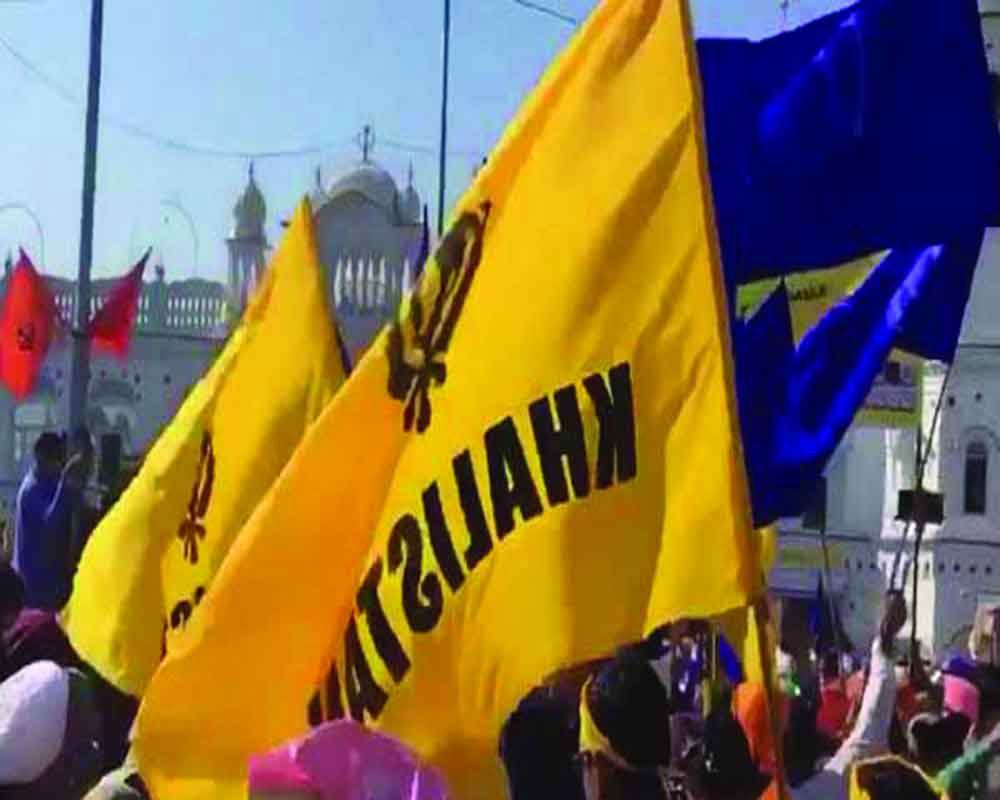This protest has no content except vilification and terror. It dodges issues of territory, Government form, State-religion ties and economy
Indian diplomatic missions in the UK, USA, Australia and Canada have recently been subjected to violent and abusive protests by pro-Khalistan Sikhs. If I were at Ground Zero, I would have simply walked around with a sheaf of foolscap papers and asked the agitators to write an essay about the proposed Khalistan. The essay must address the issues of territory, a form of government, the relationship between the state and church (SGPC), economy, demography (38 per cent non-Sikhs in Punjab, and Sikhs in the rest of India) etc. However, the essay reveals the “Khali-stan” (empty space) that exists in their minds.
Over the last 50 years, the ‘movement’ has preferred to dodge these fundamental questions. Thousands of lives have been lost in an organised misconception. Territory is the basic component of a sovereign state. The maps of the proposed Khalistan are ludicrous. In the 1980s, Khushwant Singh purchased a Khalistan map published in England, for £2. “According to this map”, he wrote in 1992, “Khalistan will include Jammu, Himachal Pradesh, Haryana, New Delhi, chunks of UP, Rajasthan and Saurashtra to give the state an outlet to the sea. By rough reckoning, the Sikh population will be 13 per cent. What kind of Sikh state will this be? Clearly, not democratic.” (My Bleeding Punjab, P.155-156).
A recent example of this lack of clarity is the fanciful Khalistan map issued by Gurpatwant Singh Pannun, of Sikhs For Justice, in June 2022 at the Lahore Press Club. Besides the Indian Punjab, it encompasses almost the whole of Haryana, Himachal, five Rajasthan districts, several Uttarakhand districts (including Dehradun and Haridwar), and a number of districts of UP. It included Gurugram, though Delhi was left out. Shimla was the capital of Khalistan, though Sikhs comprised 1.95 per cent of the city. Pro-Khalistani graffiti was actually found pasted on the Assembly Building at Dharamsala (Kangra district) on May 8, 2022, and scribes in Himachal Pradesh received pre-recorded Khalistani threat calls on their mobiles. However, in the Melbourne round of a referendum by the outfit in January, the question was whether “Indian-governed Punjab should be an independent country— Yes or No”. Where does that leave the June 2022 map?
As per the referendum, sovereign Khalistan would be a landlocked country between India and Pakistan. Punjab farmers, overwhelmingly Jatt Sikhs, are heavily dependent on rice and wheat from the Centre. This was borne out by the massive farmers’ agitation (2020-21) compelling the Government to cancel the farm laws. One would be interested in knowing how Khalistan proponents plan to offload Punjab rice and wheat mounds.
Nobody has yet seen a draft Khalistan constitution even after 50 years. The Khalsa Raj Party Constitution issued by Lt Col Partap Singh (Retd) on May 15, 1991, at Chandigarh, issued towards the end of the Khalistani insurgency, was expected to condense all wisdom on Khalistan. It advocates an independent, sovereign Sikh homeland and restricts its boundaries to Punjab and adjoining Punjabi-speaking areas ‘fraudulently kept out during a Punjab reorganisation in 1966”. Herein, Lt Col Singh assumes all Punjabi-speaking persons in India are Sikhs, and vice versa, wherein in reality 38 per cent of Punjab population according to Census 2011 is Hindu.
Will Khalistan be a democracy and a theocracy at the same time? It is open to multiple interpretations but it says nothing about the SGPC. The ‘movement’ is a bundle of imponderables, deliberately retained by its sponsors. It fits American author Paul Elridge’s description, “Man is willing to die for any idea, provided that idea is not clear to him.”
(The writer is an author and independent researcher based in New Delhi)


























